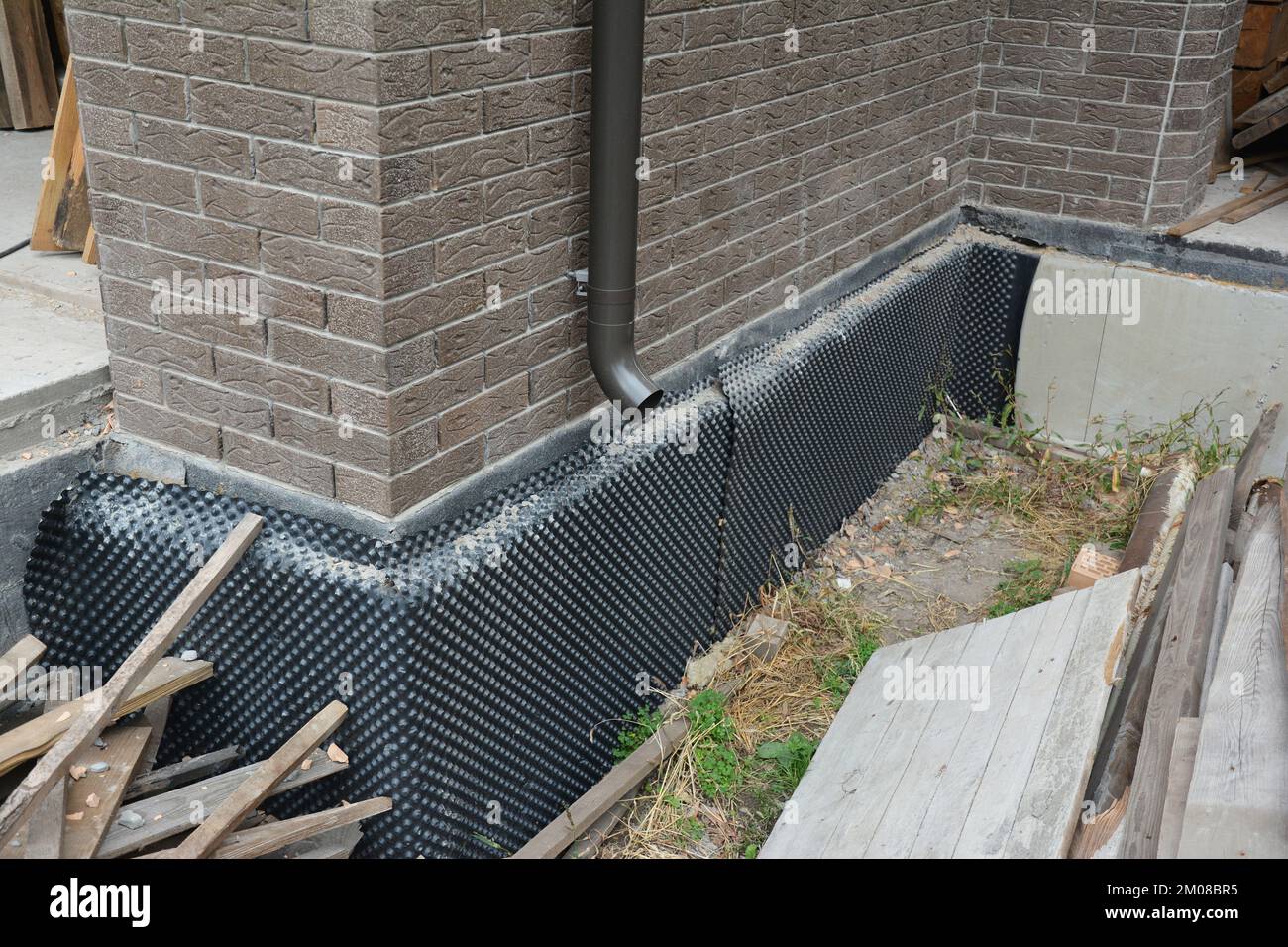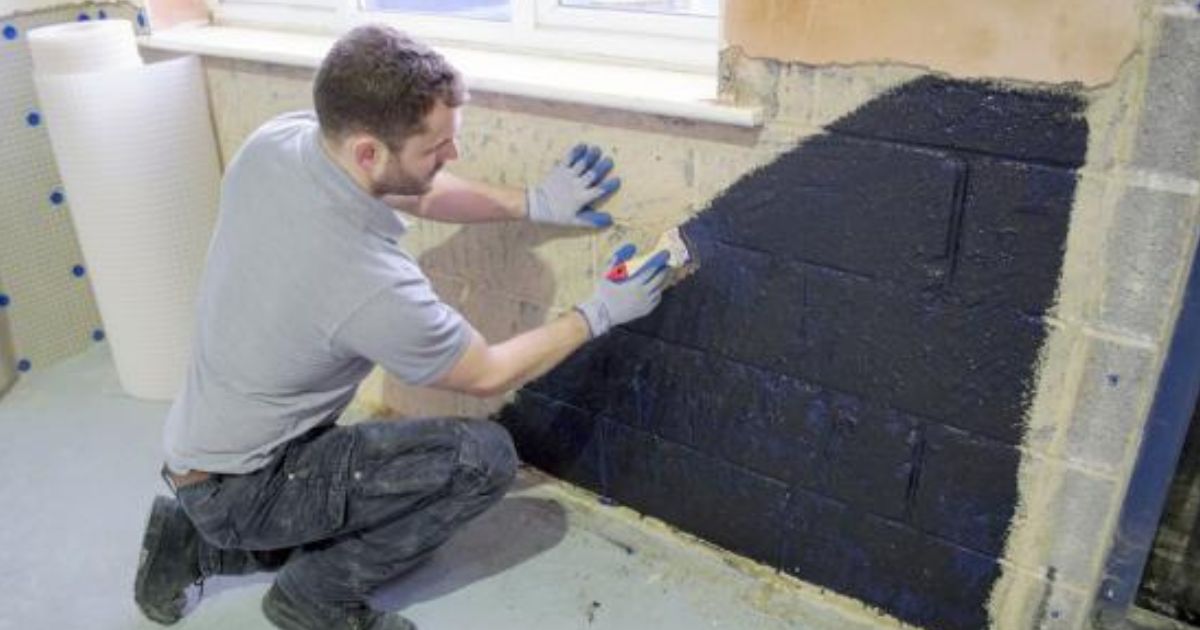Demystifying the cost of professional damp removal newcastle
Wiki Article
Exploring the Different Strategies and Solutions for Effective Damp Proofing
Moisture in buildings poses considerable obstacles to both architectural honesty and interior air quality. Different techniques and options have actually arised to battle this prevalent issue. From conventional damp-proof membranes to ingenious chemical treatments, each technique uses one-of-a-kind benefits. Recognizing these choices is important for efficient wetness control. Nevertheless, picking the right solution depends upon details structure problems and demands, motivating more expedition right into one of the most reliable wet proofing strategies readily available.Recognizing the Reasons of Wetness
Although wetness can develop from different sources, recognizing these causes is crucial for effective removal. Frequently, moisture stems from three main resources: increasing damp, permeating moist, and condensation. Rising wet happens when groundwater travels upwards via permeable materials, such as brick or rock, typically due to an absence of a reliable barrier (damp proofing newcastle). Permeating damp is normally caused by exterior factors, consisting of roof leakages, malfunctioning gutters, or damaged walls, allowing water to infiltrate a building. Condensation, on the other hand, results from excess dampness airborne, commonly worsened by inadequate ventilation and temperature level differences, causing water beads developing on surface areas. Recognizing these underlying concerns is important, as each sort of wetness calls for a customized approach for remediation. Appropriate evaluation aids in determining one of the most effective solutions, ultimately securing the architectural honesty of a structure and improving indoor air qualityConventional Damp-Proof Membranes

Chemical Damp-Proofing Solutions
Chemical damp-proofing solutions use an innovative technique to avoid dampness intrusion in buildings. These approaches normally include the application of liquid chemicals that permeate stonework and form a barrier versus climbing damp. Typically used chemicals include silanes, siloxanes, and other water-repellent representatives that respond with surface area materials to produce a hydrophobic layer.The application process generally requires boring openings right into the wall surfaces, injecting the chemical solution, and enabling it to treat. This approach is specifically beneficial for older structures where standard damp-proof membrane layers might be unwise. Chemical damp-proofing can be much less disruptive and a lot more cost-effective than substantial restoration projects.While reliable, these remedies depend on correct application and ecological problems for peak efficiency. damp removal newcastle. Regular upkeep and surveillance are essential to guarantee the long life of the damp-proofing therapy. Generally, chemical damp-proofing stands for a flexible choice for protecting buildings versus moisture-related damagesTooth Cavity Wall Building And Construction Strategies
Dental caries wall building methods offer countless advantages, particularly in dampness control and power efficiency. By including an air space between 2 layers of masonry, these wall surfaces efficiently alleviate water ingress while improving insulation. This mix not just safeguards frameworks from moisture yet also contributes to reduced power consumption.Benefits of Dental Caries Walls
When thinking about reliable moist proofing approaches, the advantages of dental caries walls attract attention prominently. Tooth cavity wall surfaces include 2 different layers, producing an air void that efficiently lowers wetness penetration. This style minimizes the danger of wetness, as the outer wall surface acts as an obstacle versus rainfall and water ingress. Furthermore, dental caries walls improve thermal insulation, which adds to energy effectiveness by lowering heat loss. They likewise supply audio insulation, aiding to create a quieter indoor atmosphere. The air void enables for ventilation, which aids in dampness control and reduces the possibility of mold development. These advantages not only enhance the overall convenience of a structure but additionally contribute to its long life and architectural integrity.Wetness Control Techniques
Reliable moisture control methods are important in tooth cavity wall surface construction to guarantee long-term protection against moisture. One primary method includes the unification of weep openings, which facilitate water drain from the more info tooth cavity, preventing buildup. Additionally, using breathable membranes can aid handle moisture degrees while allowing caught vapor to run away. Appropriate positioning of insulation is also critical, as it must not obstruct drain courses. Ensuring that the outer leaves of the cavity wall are built with waterproof products boosts overall toughness. Normal maintenance checks are necessary to identify any type of clogs or damages early, safeguarding the structure's integrity. Eventually, a combination of these methods develops a robust defense against wetness breach in dental caries wall surfaces.
Insulation and Power Effectiveness
Insulation plays an important role in enhancing energy efficiency within cavity wall construction. By incorporating insulating materials, these walls develop a thermal barrier that minimizes heat loss and reduces power intake. Reliable insulation not just assists maintain a steady indoor temperature but additionally reduces the danger of dampness, as it stops condensation within the wall cavity. Different techniques, such as the usage of rigid foam boards or mineral wool, can be utilized to attain optimal insulation performance. Additionally, proper setup is vital to assure that spaces and gaps are minimized, which can or else jeopardize energy efficiency. Eventually, a well-insulated tooth cavity wall adds considerably to overall sustainability and decreases cooling and heating expenses for property owners.Exterior Damp Proofing Techniques
Outside damp proofing techniques are vital for protecting frameworks from moisture infiltration. Two efficient techniques consist of the application of water resistant membrane layers and the installment of French drains pipes. These solutions help minimize water buildup and protect the honesty of structures.Waterproof Membrane Layer Application
While various methods exist for protecting against dampness ingress, the application of water-proof membranes stays an extremely reliable external damp proofing method. These membrane layers are normally made from products such as polyethylene, rubber, or changed asphalt, giving a durable obstacle against water infiltration. The installment procedure involves applying the membrane to the outside surface areas of wall surfaces or structures, guaranteeing total insurance coverage to prevent leaks. Proper bond and sealing at joints are important to making best use of effectiveness. Waterproof membranes can be applied in different types, including liquid finishings and sheet membranes, permitting for flexibility based upon the details needs of the framework. This approach not just secures structures from moisture yet likewise improves their longevity and architectural stability.French Drain Setup
One efficient method for managing groundwater and avoiding moisture build-up around a building's structure is the installation of a French drain. This drainage system contains a trench full of gravel and a perforated pipeline that reroutes surface area water far from the foundation. Correct setup needs careful preparation, making sure that the drainpipe slopes far from the framework to help with optimal water flow. In addition, the place of the drainpipe is crucial; it must be positioned in locations susceptible to merging or excess wetness. Normal maintenance, consisting of cleaning particles from the crushed rock and guaranteeing the pipe continues to be unhampered, is vital for long-term performance. Eventually, a well-installed French drainpipe can greatly lower the risk of water-related problems in basements and foundations.Interior Waterproofing Approaches
Interior waterproofing methods are vital for securing a structure's interior from wetness seepage and potential water damage. These approaches usually include the application of customized materials and techniques created to develop a moisture obstacle within the framework. One common technique is the use of waterproof finishings or sealers on wall surfaces and floorings, which avoid wetness from permeating surfaces.Additionally, mounting indoor water drainage systems, such as sump pumps, can properly handle water buildup in basements and crawl rooms. Another method entails using vapor obstacles, which are mounted to prevent wetness activity from the ground right into living spaces.Moreover, resolving any kind of fractures or gaps in walls or foundations with suitable sealants guarantees a detailed protection versus water breach. By implementing these indoor waterproofing approaches, residential property proprietors can considerably minimize the danger of mold development, architectural damages, and other moisture-related issues. Correct implementation of these methods is vital for long-term defense and structure integrity.Normal Upkeep and Evaluation Practices
Normal maintenance and assessment practices are important for assuring the lasting performance of moist proofing services in any building. Regular checks make it possible for homeowner to recognize early signs of dampness invasion, such as peeling paint, mold and mildew growth, and stuffy odors. These indications can indicate underlying issues that need immediate attention.Inspections must be conducted at the very least yearly, concentrating on prone locations like cellars, crawl rooms, and exterior wall surfaces. During these evaluations, building owners must examine sealers, drainage systems, and ventilation to validate they function correctly.Additionally, preserving downspouts and gutters is essential, as blocked systems can bring about water accumulation near the structure. Implementing a routine upkeep timetable, along with prompt fixings, can substantially extend the life-span of wet proofing measures and shield the structural integrity of the structure. Aggressive actions ultimately contribute to the general health and wellness of the living setting.Often Asked Concerns
How Long Does Damp Proofing Normally Last?
The period of wet proofing effectiveness differs, normally lasting between 20 to 50 years. Variables such as application top quality, environmental conditions, and maintenance techniques substantially affect the long life of the moist proofing treatment.
Can I Damp Proof My Home Myself?
The individual contemplated the feasibility of DIY damp proofing. With correct study and the appropriate products, it is feasible. They likewise recognized the significance of professional assistance to ensure resilient performance and prevent future problems.What Are the Indicators of Inefficient Damp Proofing?
Indicators of inefficient wet proofing include relentless stuffy smells, visible mold growth, peeling off paint, damp patches on walls, and timber degeneration - mould treatment newcastle. Home owners must address these issues quickly to stop further damages and health and wellness worriesDoes Damp Proofing Affect Indoor Air Quality?

How Much Does Professional Damp Proofing Price?
Professional moist proofing prices vary substantially, normally ranging from $1,000 to $5,000 depending upon the residential or commercial property's dimension, the extent of the moist concern, and selected methods. Each circumstance requires a tailored evaluation for precise prices. Commonly, wetness originates from 3 key resources: rising moist, permeating wet, and condensation. When considering efficient wet proofing approaches, the advantages of tooth cavity wall surfaces stand out prominently. External moist proofing approaches are vital for shielding structures from wetness infiltration. While numerous methods exist for stopping moisture ingress, the application of water-proof membrane layers continues to be a very reliable exterior wet proofing technique. Signs of ineffective damp proofing include consistent moldy odors, visible mold growth, peeling off paint, wet spots on walls, and wood decay.Report this wiki page